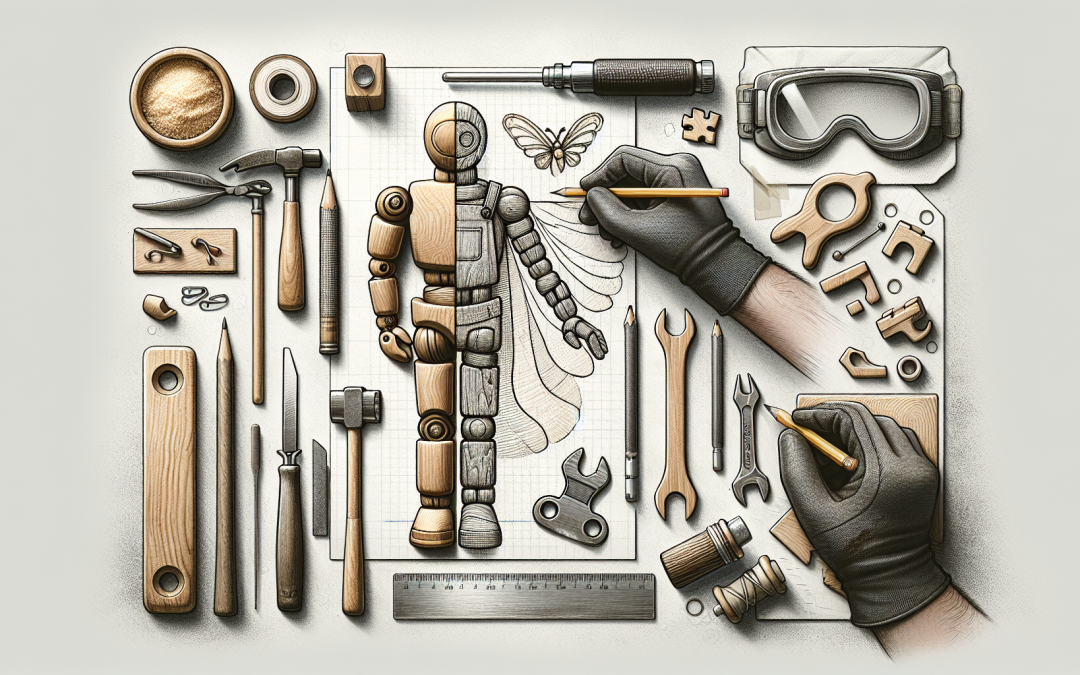Woodworking is an art that continues to charm enthusiasts worldwide, both as a satisfying hobby and as a lucrative profession. Toys are perfect beginner’s projects that will help you familiarize yourself with woodworking tools and techniques, all while creating something fun and meaningful. In this guide, we’ll walk you through the process of crafting wooden toys for beginners – from the first drawn sketch to the crucial safety measures.
Getting Started: Sketching Your Toy Design
Before you dive right into cutting and joining pieces of wood, you first need to decide what you want to make. Simple handdrawn sketches can act as a blueprint for your toy. Begin with a basic idea, perhaps a small car or rocking horse, and draw multiple views of the toy. Detailing your toy’s sketch is a fun and creative part of the process that allows you to visualize exactly what you’ll be working on.
If sketching is not your forte, don’t let that dissuade you. Several resources online provide sketches and patterns created by professional woodworkers. Do not hesitate to modify these sketches as per your preference. Remember, this is your project, and it should match your vision.
While sketching, keep in mind the type of wood you’ll be using. The properties of your chosen wood, such as strength and grain, can affect how you approach your design and the subsequent steps.
Essential Tools for Your Project
Once your design is ready, it’s time to gather the essential woodworking tools. Some indispensable tools for every beginner include saws, chisels, planes, measuring tapes, and safety gear like goggles and gloves. These foundational tools enable you to create a variety of projects and hone your woodworking skills simultaneously.
Another crucial tool for toy making is a router, which can help you carve intricate patterns and detail into your projects. For beginners, it might seem a little intimidating at first, but with some practice and router techniques, you can amplify your woodworking creativity.
Remember, tools are an investment. For beginners, it’s better to start with only the essentials and build up your collection as you grow more confident in your skills. Patience is key to mastery, and woodworking is no exception.
From Sketch to Wooden Toy: Crafting Process
With a sketched design and essential tools in hand, you’re ready to venture into the actual woodworking process. This part of the project involves several steps, from precise cutting and joinery to smoothing and finishing your toy.
Accuracy in measurements is vital. Always remember the old woodworking adage — “Measure twice, cut once.” It not only prevents wastage of material but also makes the assembly process smoother. For precision cuts, ensure you have the right blades and set up your tools correctly.
As your toy begins to take shape, pay attention to your toy’s joints. Different methods, like dovetails and mortise-and-tenon, can make your toy stronger and last longer. Don’t let the— seemingly complex— joinery techniques intimidate you. With a little practice, they will soon become second nature.
The Final Touches: Wood Finishing Techniques
Once your toy’s structure is ready, finishing techniques make all the difference. Applying finish enhances the look of the toy, highlighting the natural beauty of the wood grain with the right wood finishing techniques .
Before applying the finish, ensure your toy’s surface is smooth and devoid of any visible scratches or dust. You can achieve this by sanding the toy with a progression of finer grit sandpapers. Finish your woodworking marvel with a
Never Compromise on Safety
While the thrill of creating a toy out of raw wood can be exciting, never compromise on safety. Woodworking involves working with sharp tools and machinery, so don’t neglect your safety measures. Always wear protective gear, like safety glasses and gloves, and ensure that your workspace is clean and free from potential hazards.
In the end, remember that woodworking is about enjoying the process just as much as the finished piece. So embark on your toy crafting journey today and watch your progress unfold one project at a time.
A skill-building woodworking tutorial can keep you engaged and help improve your skills faster. Whether crafting toys or refurbishing antique furniture, each project is a step towards mastering the beautiful world of woodworking.

